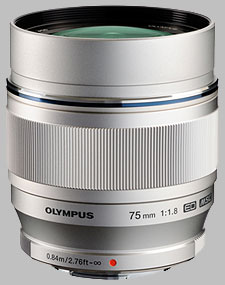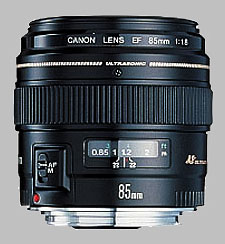wow! Thank you! Really nice!
That 150mm is totally out of budget/question!

2500€ ?! uau! Got to be great!
The 75 is...well, i was thinking that with another body i would not have to be changing lens as often, and the cost of 75 is about the same as 2nd hand canon body+85mm...
Do you know what i mean?!
That is always the compromise, to own and carry two systems instead one.
This is what makes 4/3" format so powerful compared to others that you can combine any lens and body combination of the m4/3 system. You can example get out with a GM1 and DJ X5S and have 12mm f/2 + 25mm f/1.8 and still be swapping lenses on either camera.
If you are going to have a Canon + 85mm dedicated to that, you are going to carry two cameras with you. A EF + m4/3 cameras.
I know that 85mm should be "worse" than the 75, but...how much?!
For portraiture not much at all.
And I mean portraiture the classic most common ones like these:
Notice the details, notice the "depth of field" and then notice the background.
There are many different things that shallow DOF lovers don't get and are mistaking them to shallow DOF, while they are totally different visual language elements like example:
1) Subject in focus
2) Background structure
3) Color contrast / choice of colors
4) Lighting
5) Subject pose
Those are "Subject halfly out of focus".
Compare them to example these from
Dylan Patrick, using common classic method:
And how that was shot? This is the setup Patric had for that last one:
If you attend to common portrait lessons, you will find that the shallow DOF isn't the key.
If you attend to art lessons for portraiture, again you will find that blurry model isn't the key.
Patrick searches the background that has the colors and the shapes he likes for the subject. Not just point camera with 85mm f/1.4 and call the day. The magic happens in everything else from lighting to background selection and then using 200mm at f/3.2 or f/4.
Theres is another possibility that i can think of. My brother in law has a Canon that he doesn't use as much. I can buy that 85 and try in his borrowed camera, just to see how i feel about it...(despite that's kind of awkward to do...)
You can always go out for it to try, but you are having a APS-C or FF. If you go that, borrow somewhere a 70-200mm f/2.8 or f/4 and try that 200mm thing. But again you are having two systems that means:
- Different batteries
- Possible different cards
- Different post processing
- Different mounts
- Different flash systems
- Different camera settings and capabilities
- Different viewfinders
So how much is all that worth really?
Drop a 75mm f/1.8 or 42.5mm f/1.7 even to camera bag with m4/3 system among all other lenses you can have, maybe get a second body even. And still be able to swap the lenses and bodies mixing to get different camera you need without problems.
Thing with (metabones) adapters is that they always strugle with something, like AF in this case, AND they are expensive for me/for that reason! Sadly!

And they add a lot of other things everyway. That is why the Olympus 150mm f/2 is just sad thing as it is 4/3 mount instead m4/3 so adapter is needed for that, but at least it can be "clued" to that lens only but still a compromise. So many would love to see many of the 4/3 mount lenses converted to m4/3 mount. Even if they would keep their high prices.
For a nice portraits it is cheaper to go and get few books about posing and then get some books about colors and then get some basics about lighting (not about light setups, but about lighting) and suddenly 45mm f/1.8 Olympus or Pana 42.5mm f/1.7 turns to be pure magic lenses even when compared to FF 85mm f/1.4. Even easier is to control background with a 75mm. And this is the most interesting part, even the Olympus 12-100mm f/4 makes great portrait lens at 100mm f/4.
Is it as easy to just shoot snapshots with half-face out of focus? No.... As you are required to understand the elements that makes the photos nice.
If you find a great background, you can use it to create a far more interesting portrait. Tell the story, link the person to context.
Okay, here is a different style that
Joel Grimes uses a lot. He use photo manipulation for portraiture, it is his style. A UWA lens (16mm) to capture backgrounds and then a usually 24-70mm at around 24-35mm to capture the person and then combine in the image editor. Check out his workshops etc.
But notice. How much does the background in focus disturb the portrait? Not at all.
How much does the WA focal length disturb the person? Not at all.
He uses light, colors and poses to create the look and the feel. Not the shallow DOF (he does that as well btw).
So many comes and say "For portraiture you need 85mm f/1.4 lens in FF" and then starts the arguments about how anything else isn't as good or as great and how something else is equivalent to this and it ain't so good etc.
It is like the holy thing to have a 85mm f/1.4 and nothing else can touch that or it is blasphemy. It is the whole "Shallow DOF is the only way for great portraiture".
How many talks about colors, composition, background, lighting and poses? It is just the shallow DOF, for almost every time. People go to interesting places, locations etc, and then they shoot everything wide open and even use ND filters to do that!
The Shallow DOF worshippers can't get good portraits by other means. Then they mistake the shallow DOF in their photos for a specific backgrounds, lights, poses, colors etc as they can't see that those are the things that makes the photo more interesting and then usually the shallow DOF is there to just ruin the shot more, but everything else is there to save it. And if they would have stopped down, they very likely would have far better results. But they can't see that as they are afraid that their expensive lens is worthless if not shot wide open. That their photography is so dependant from the shallow DOF.
I gave examples for two totally different ways to do portraiture.
A long focal length + smaller aperture.
A ultra wide angle + wide angle + smaller aperture.
Both are in the capabilities of the 4/3" format. Easily. It is possible even fairly cheaply. And it doesn't restrict to single focal length or duplicate camera systems and all that comes with it.
As for making a point, look what this man can do with just a pen...
The key is that he knows how to use the space and what elements he wants in the photo and just does it. He isn't restricted to "I need to use just this to get it".
So I would still say that if you have those two options, get the Olympus. But even more I would recommend is to get training with something else first, as you might very well find out that you don't need either lens at all.
It is free to take few steps to find a better perspective. It is free to ask a subject a side for better background. It is free to use available light differently, or use the existing illumination tools to create the light. It is free to learn how to control the subject and get the posing.
But many thinks that good portraits are "snapshots" from unaware person. Like a street photographs. Well, in street photography making the contact first is totally allowed. Get them to pose for you and do what ever. In journalism it isn't allowed at all. In journalism you can't even hint a person with gestures or even your eyes to do something. You need to be on the location like you don't exist.
And many mistake that to portraiture as it is the only real way.
It is one way, but not the only way.
And that is what makes photography fun that there are all the rules and all the guides etc, but you are so free to break almost all of them as much you want. The big mistake you can do is that you start following some specific style or specific technique or even worse, someone.
When few decades ago there was a group called "group f/64", it is now like there is a same niche group called "shallow DOF".
Nothing wrong in either ones, but it just can get to be like a cult. Where you are rocked down if you don't have a FF, and you don't have a shallow DOF and how "less DOF is always more".
At least we still have a "aperture ring" in our lenses, and some of us ain't afraid to use it..


























